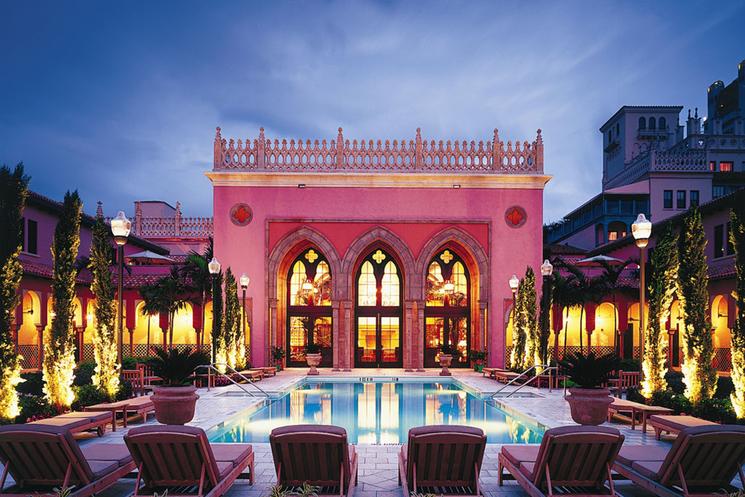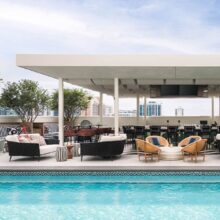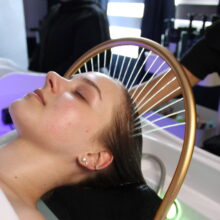Issue 10: Do you agree that the spa and wellness industry has seen very little innovation?
- Published: Friday, May 18th 2012
- in Living Well
If you aren’t quite sure how to answer that question, consider this very bold reply below, which was in response to one of the five questions posed to delegates planning to attend the upcoming Global Spa and Wellness Summit (GSWS) in Aspen, Colorado:
What do you see as the main innovations in the spa/wellness industry (existing and future)?
True innovation, rather than progressive improvement, in spa/wellness has been stagnant since 1957 when Harold Zinkin (Muscle Beach!) patented his “Universal Equipment.” The next major innovative influence was when Dr. Kenneth Cooper taught us all how to take a pulse and kicked up the heels of “aerobics.” Everything else that has happened in the development, delivery and execution of spa and wellness since then has been (sometimes highly) creative and attentive, at best.
This answer is particularly interesting because it was given by Sylvia Sepielli, arguably one of the world’s most respected and successful spa designers. She is very much in step with what the agenda committee concluded while defining the theme for the 2012 Summit: There really hasn’t been much innovation in the spa and wellness industry.
Do you agree with Sylvia? Read Sylvia’s very thoughtful answers in their entirety below:
What are the most significant global issues facing us today?
Poverty, economic uncertainty and the effects of economics are among the most significant global issues. Those issues affect decisions made regarding all the other topics, whether it be spending dollars for research, involvement that take time or money in a movement, charity donations and the like.
What do you see as the main innovations happening around the world, those which are game changing and/or disruptive?
Easily accessible, inexpensive means of communication and social media come to mind first. These are game changing and disruptive, as witnessed by global political events the past 18 months. It’s even possible to imagine a day when Microsoft looks passé.
The other field that is fascinating to me is biotechnology, particularly in the application of the health/medical arena. From nerve regeneration to prosthetic feedback, the era of the “bionic person” is no longer fiction. Coupled with advances made in agricultural development and sustainability, “fooling with Mother Nature” may not be so bad after all. Science and lifestyle are extending the limits of what we used to consider “longevity” to mean.
What do you see as the main innovations in the spa/wellness industry (existing and future)?
True innovation, rather than progressive improvement, in spa/wellness has been stagnant since 1957 when Harold Zinkin (Muscle Beach!) patented his “Universal Equipment.” The next major innovative influence was when Dr. Kenneth Cooper taught us all how to take a pulse and kicked up the heels of “aerobics.” Everything else that has happened in the development, delivery and execution of spa and wellness since then has been (sometimes highly) creative and attentive, at best.
Innovation in how we communicate with each other and our guests has changed, along with new marketing perspectives. In the future there will be more intimate means of caring for oneself in the home environment such as toilets that read your vital statistics. New communities will be developed with the intent of extending active lifestyles beyond what is happening in the so-called “active living” communities of today. In design, both architectural and interior, the major innovations will be designs that incorporate the practicality of accessibility, with visionary aesthetics.
What do you see as the greatest opportunities/challenges for the global spa and wellness industry?
Lifestyle changes take discipline. While there are some easy or effective interventions, there are still no single magic pills, procedures or other people who can do it all for you.
Spas are viewed as enjoyable endeavors, whereas the concept of “wellness” seems to evoke no similar sensations. Kinesthetic and emotional connection must be made by individuals to the state of well-being. Short-lived euphoria on one hand, or pain and suffering on the other are much easier to recognize. There would be greater compliance to healthy living if people consciously and willfully gravitated to the mid-range of the continuum of health, rather than mindlessly drifting to the outer edges.
If we are passionate about sustaining our industry, then it’s our job to nudge perception in that direction. Delivery of treatments, wellness protocol and time spent on spa/wellness must have value. And the participants and potential participants must acknowledge that value. A variation to the saying “money follows quality” is that “consistent money follows consistent quality.”
What are some practical ways for businesses to create a climate for creativity and innovation?
- 1. First, creativity and innovation must be core “living” values of a business. Every employee, guest, vendor, contractor and any other people associated with the business must know the values and support them.
- 2. Hire rebels.
- 3. Changes in hiring practices, pay, operating hours, purchasing and marketing, were made at a very grassroots level in order to survive and thrive during the recent economic downturn. Small changes like those, while not the exciting “wows” give owners and developers confidence to take greater risks with investments. Incite mini quakes on your own.
- 4. Keep your eye on the market, both current and desired. The untapped information from the entire staff, attendants, service operators, instructors, front desk is invaluable.
- 5. Reward the innovative mind-set.
- 6. Expose your team to non-spa/wellness related influences to avoid myopic vision.
Do you agree with Sylvia? Let us know.



